
ProtoHouse by Softkill Design
London architecture team Softkill Design has designed a conceptual house that would be 3D printed in sections in a factory and fitted together on site (+ interview transcript).
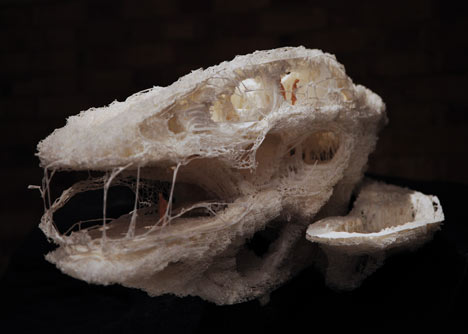
Above image is by Julia Kubisty
Designed to cantilever out from a hillside, the structure of the house was generated using an algorithm that imitates bone growth to deposit material where it is needed along lines of stress, resulting in a fibrous web rather than a solid envelope.
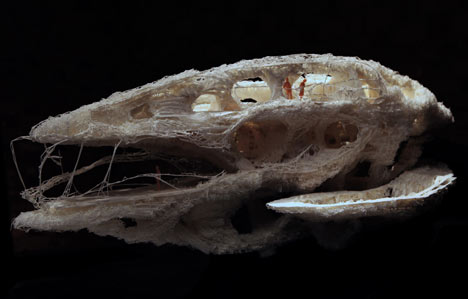
Above image is by Julia Kubisty
The structure is porous, allowing rain to permeate, with waterproofing on the inside rather than the outside.
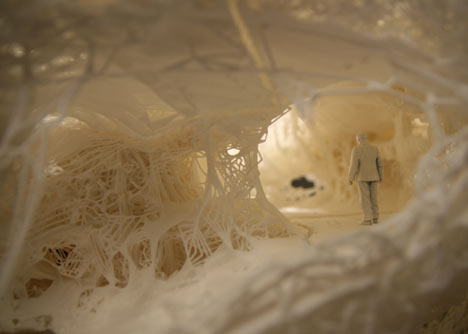
The house would be printed in 31 sections using the largest 3D printer currently available, then transported by truck to the site and fitted together.

Aaron Silver of Softkill Design told Dezeen that 3D printing could result in cheaper buildings that use less materials. "I think there really is an interesting future for architecture and 3D printing," he said. "You have great cost savings, material efficiency, things like that, which architects are vastly interested in."
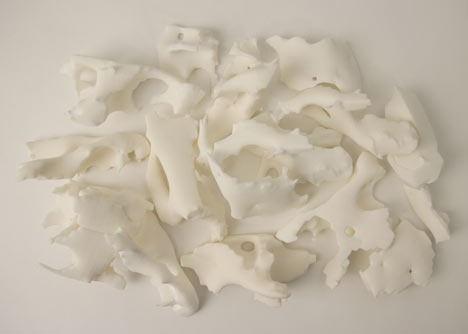
Silver added that cladding materials and roofing could be printed as flexible fabrics and draped over buildings. Softkill Design are developing printed "curtains" that could be used "as interior membrane surfaces or exterior, water-resistant panelling and surfaces."
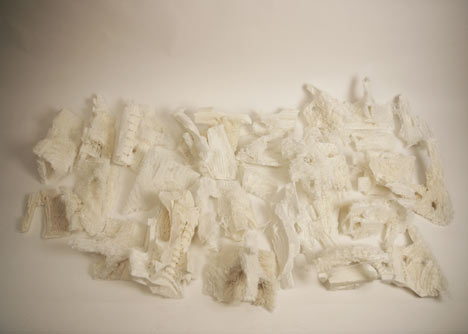
Silver spoke to Dezeen editor-in-chief Marcus Fairs at the 3D Printshow in London last week. See all our stories about 3D printing.
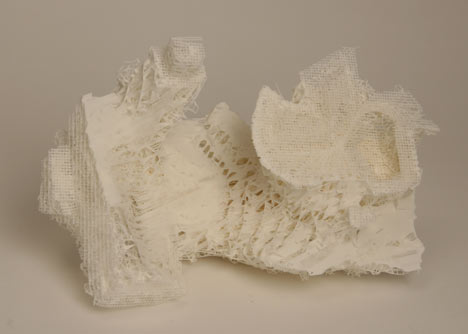
Here's the transcript of the interview:
Aaron Silver: My name is Aaron Silver, I am part of Softkill Design, and we are a team of architects and researchers who originally formed at the Architectural Association here in London. This project here is about a year's worth of research into structural optimisation in architecture and 3D printing in architecture.
So the project is a 3D-printed cantilevering house, and really it is research based on distributing material along the lines of stress. We created an algorithm that mimics bone growth so really we are depositing material only where it is most necessary and most structurally efficient. Also, as we are designers and architects, it is not a purely structural object, we also tried to design with it and create our own forms.
Marcus Fairs: So rather than printing out a standard building typology, you are looking at what the 3D printing technology can do to optimise the use of materials and come up with new forms.
Aaron Silver: Yeah, absolutely. We were designing within a certain range of constraints such as transport and the existing size of printers. So the house is ultimately composed of 31 individual pieces, which then interlock in a kind of three dimensional puzzle. They don't need any adhesive because of the fibre structure. They kind of just interlock and stay in place.

Marcus Fairs: So this would be made in sections, in a controlled environment, and then taken to the site?
Aaron Silver: Yeah. So one strategy that a lot of people have been experimenting with is constructing a very large 3D printer on site. The printer is essentially the size of the structure that is being built. But we were interested in working within the constraints of the existing technologies. For us, it made more sense to work within a controlled environment and then take it to the site.
Marcus Fairs: It looks like a bone opened up or Vermicelli or something like that, but apart from the structure, is it waterproof? Is it a viable construction method? Is it liveable?
Aaron Silver: We decided was to leave the fibrous material on the exterior. As you can see, up close, the interior surface is where the waterproofing is. So water is absorbed, and the waterproofing is on the interior. What is not shown in the model is the translucent window membrane which isn't part of the structure.
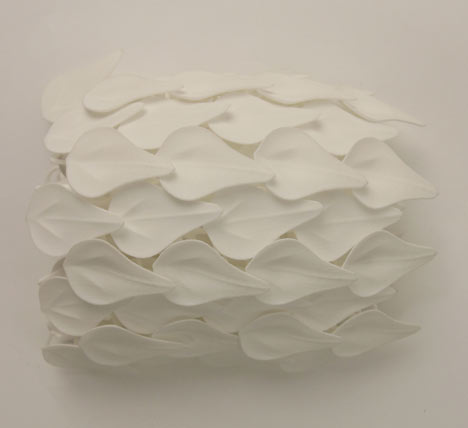
Marcus Fairs: What material would it be printed in?
Aaron Silver: So this [model] was printed in plastic, plastic powder. But ultimately it can be programmed to accommodate any kind of material. It made sense now to consider just working with the one material, as you can't really print in multiple materials so well just yet. So we also wanted to give ourselves that design constraint, but ultimately we are considering it to be plastic.
Marcus Fairs: And how exciting and how realistic are the opportunities for 3D printing in architecture? Will it transform the way that buildings are built? Or will it be a specialist, one-off, luxury, rich man's thing?
Aaron Silver: Sure. I think at the moment, as you said, kind of luxurious, maybe one-off pavilions, things like that. But I think there really is an interesting future for architecture and 3D printing; because you have great cost savings, material efficiency, things like that, which architects are vastly interested in. That is where 3D printing is really pushing the discipline and architects can really take advantage of this.
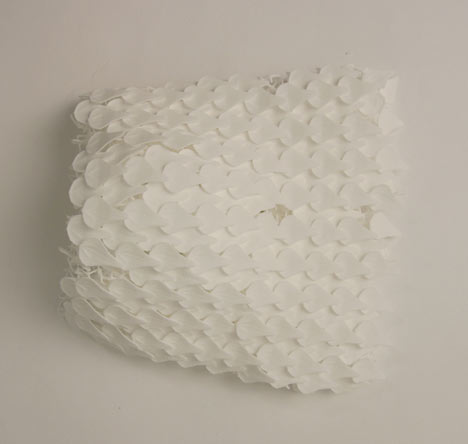
Marcus Fairs: And do you have plans to make any of this in 1:1 size?
Aaron Silver: Not as of yet, but certainly we would like to prototype on a larger scale. This is 1:33 scale at the moment.
Marcus Fairs: And these fabrics, what are these? Are these proposed cladding systems or clothing?
Aaron Silver: This was a part of the original research. These are curtains which we were considering either as interior membrane surfaces or exterior, water-resistant panelling and surfaces. What we were looking at was controlling bending and movement flexibility just throughout the geometry itself. On one side you have slightly different geometry to the other, which gives different flexibility on either side.
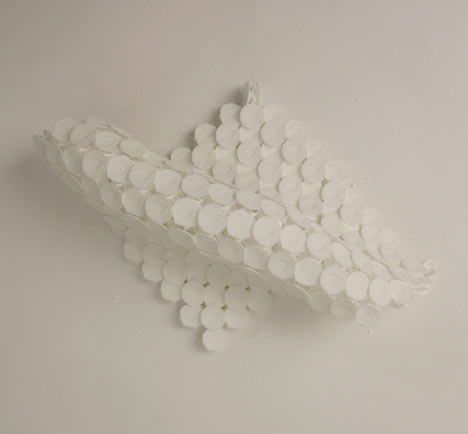
Here is some more information about the project from Softkill Design:
Softkill Design investigated the architectural potential of the latest Selective Laser Sintering technologies, testing the boundaries of large scale 3D printing by designing with computer algorithms that micro-organize the printed material itself. With the support of Materialise, Softkill Design produced a high-resolution prototype of a 3D Printed house at 1:33 scale. The model consists of 30 detailed fibrous pieces which can be assembled into one continuous cantilevering structure, without need for any adhesive material.
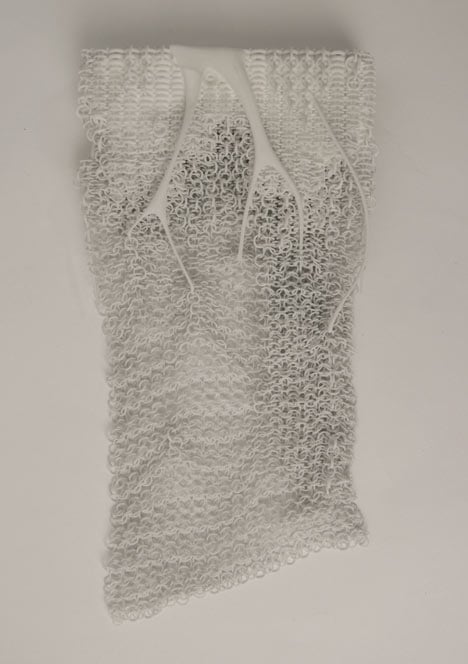
The arrangement of 0.7mm radius fibres displays a range of flexible textures and the ability to produce in-built architectural elements, such as structure, furniture, stairs, and façade, all in one instance. The Softkill house moves away from heavy, compression based 3d printing of on-site buildings, instead proposing lightweight, high-resolution, optimised structures which, at life scale, are manageable truck-sized pieces that can be printed off site and later assembled on site.
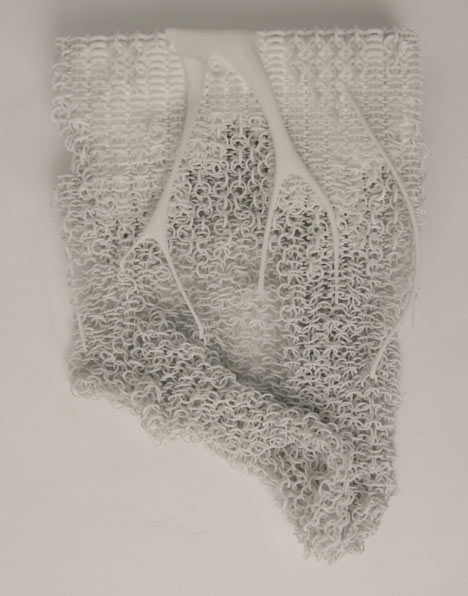
Softkill Design is a London based team of architects (Nicholette Chan, Gilles Retsin, Aaron Silver, Sophia Tang) researching new methods of generative design for additive manufacturing. The unique workflow aims to produce intelligent designs which intuitively utilize 3D-print technology. Research was founded at the Architectural Association School of Architecture's Design Research Lab in the studio of Robert Stuart-Smith. Research prototypes were generously supported by Materialise, with additional support from VoxelJet, and Sirris.
Name of the designers: Softkill Design - Nicholette Chan, Gilles Retsin, Aaron Silver, Sophia Tang
Title of the work: Prototype for a 3D-Printed House
Materials used: (3D Print) Laser Sintered Powder, (Base) Foam, MDF Board, Textured Paint
Year produced: 2012
Sponsorship: Materialise